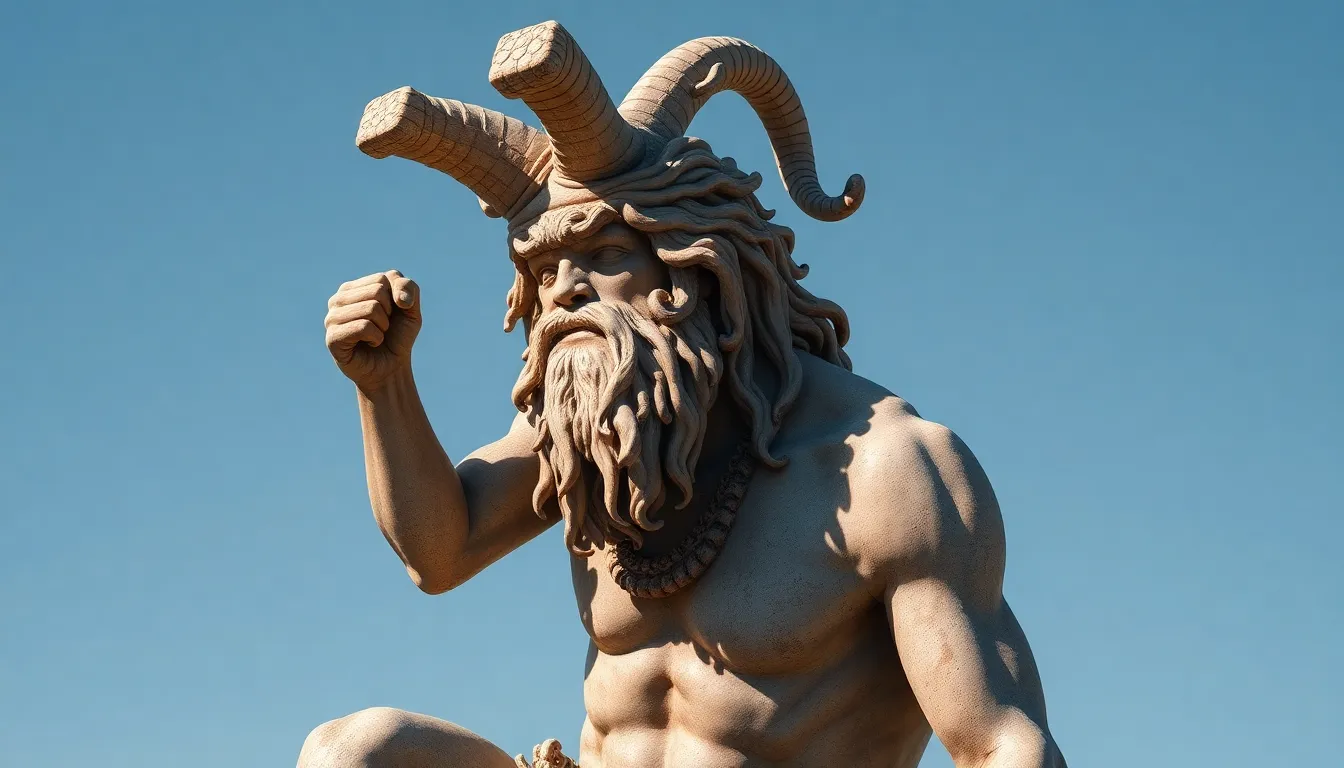The Satyr in Contemporary Art: Modern Interpretations and Expressions
I. Introduction
In Greek mythology, a Satyr is a creature that embodies the untamed aspects of nature, often depicted as half-man and half-goat. These beings are closely associated with Dionysus, the god of wine, revelry, and ecstasy, highlighting their roles as symbols of fertility, hedonism, and the primal instincts of humanity. Throughout art history, the Satyr has served as a compelling subject, inspiring countless artists to explore themes of nature, pleasure, and the complexities of human behavior.
The purpose of this article is to delve into modern interpretations and expressions of the Satyr in contemporary art, examining how these mythological figures have evolved and continue to resonate in today’s cultural landscape.
II. Historical Context of the Satyr in Art
The origins of the Satyr can be traced back to ancient Greek mythology, where they were often depicted as companions of Dionysus, engaging in revelry and ecstasy. Their presence in classical art is notable in various forms, including sculptures, paintings, and literature.
- Origins of the Satyr: Satyrs are believed to have originated from the fusion of earlier fertility deities and woodland spirits.
- Classical Art: In classical art, Satyrs were frequently portrayed in relaxed poses, indulging in wine and music, showcasing their carefree and playful nature.
- Art Movements: The depiction of Satyrs transitioned through various art movements, adapting to the changing cultural contexts of the times.
III. Characteristics of the Satyr: From Symbolism to Modernity
Traditionally, Satyrs are characterized by their goat-like features, which include horns, pointed ears, and a hairy body. In addition to their physical traits, Satyrs are known for their hedonistic behavior, often indulging in pleasures such as drinking, dancing, and chasing nymphs.
The symbolism of Satyrs extends beyond their physical attributes. They represent:
- Nature: Satyrs are often seen as embodiments of the wild, untamed aspects of the natural world.
- Fertility: Their association with Dionysus links them to fertility and the life force inherent in nature.
- Hedonism: The Satyr serves as a reminder of the pleasures of life, encouraging individuals to embrace their desires.
In contemporary contexts, these characteristics have evolved, often reflecting modern societal values and challenges.
IV. Contemporary Artists Reimagining the Satyr
Numerous contemporary artists have reinterpreted the Satyr in their works, bringing fresh perspectives to this ancient figure. Notable artists include:
- Jeff Koons: Known for his playful and provocative art, Koons incorporates elements of Satyr mythology in his exploration of consumerism.
- Yayoi Kusama: Her works often reflect themes of nature and sexuality, using Satyr-like elements to symbolize desires and instincts.
- Damien Hirst: Hirst’s exploration of life and death parallels the hedonistic nature of Satyrs, creating a dialogue between pleasure and mortality.
Case studies of specific works highlight these modern interpretations. For example, Koons’ large-scale sculptures may evoke the indulgent nature of Satyrs while critiquing contemporary consumer culture. Artists utilize various techniques and mediums, such as:
- Installation art
- Digital media
- Performance art
V. Themes Explored Through the Satyr in Modern Works
Contemporary representations of Satyrs often explore complex themes, including:
- Sexuality and Sensuality: Modern Satyr art frequently emphasizes eroticism, challenging societal norms surrounding sexuality.
- Critique of Societal Norms: The hedonistic nature of Satyrs is sometimes used to critique consumer culture and the pursuit of pleasure over substance.
- Environmental Themes: As symbols of nature, Satyrs in contemporary art often represent the wilderness and the need for environmental consciousness.
VI. The Satyr in Popular Culture and Media
The representation of Satyrs has extended beyond traditional art into popular culture, influencing films, literature, and digital art. In film, Satyr-like characters often embody themes of desire and freedom, while in literature, they serve as metaphors for the complexities of human nature.
The influence of pop culture on the modern perception of Satyrs can be seen in various forms, such as:
- Fantasy novels that incorporate Satyr characters
- Video games featuring mythological creatures
- Animated series that reinterpret classic myths
This intersection of mythology and contemporary storytelling allows for a reimagining of the Satyr, making them relevant to modern audiences.
VII. Public Reception and Critique of Satyr Representations
The public’s reaction to contemporary Satyr art is diverse, reflecting a range of interpretations and opinions. Some viewers celebrate the bold and provocative nature of these representations, while others critique them for reinforcing stereotypes or trivializing mythology.
The role of social media has significantly shaped perceptions of Satyr imagery, allowing for wider dissemination and discussion of contemporary art. Platforms like Instagram and TikTok have become avenues for artists to showcase their interpretations, fostering dialogue and debate among audiences.
Balancing tradition and modernity is crucial in this discourse, as contemporary artists navigate the legacy of Satyrs while infusing their work with contemporary relevance.
VIII. Conclusion
The evolution of the Satyr in contemporary art reflects a dynamic interplay between tradition and modern expression. As artists continue to reimagine this ancient figure, the Satyr remains a relevant symbol of nature, desire, and the complexities of human experience.
The continuing relevance of the Satyr in modern artistic expression suggests that these mythological figures will persist in inspiring future generations of artists. As cultural contexts evolve, the Satyr will likely find new interpretations, ensuring its place in the ever-changing landscape of art and culture.




